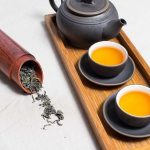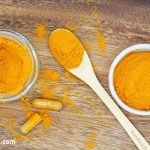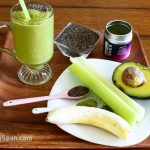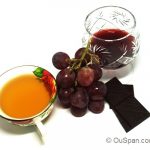
Matcha is a Japanese word that literally means 'powdered green tea'. The Matcha green tea is originated in Japan; however, it is believed that the first seeds were delivered from China in 1191 A.D. The seeds were planted on the temple ground in Tokyo by Monk Eisai, who introduced the Zen Philosophy to Japan. Zen Philosophy traditionally practices Dhyana meditation. Eisai was the first one to grind and consume the powdered green tea.
In the Japanese tea traditions, Matcha is much more than a drink. It has been an integral part of Japanese culture that used in celebration of the profound grace and beauty of simple things in life - the extraordinary in the ordinary. A popular celebration where Matcha tea is the focal point, a peaceful ceremony provides a great bonding experience of respect, mindfulness, and focusing on the current moment.
Why is Matcha more beneficial than other green teas?
Matcha is considered to be more nutritious and healthier than other varieties of green teas. The most obvious reason is, of course, the way it is grown, harvested, and prepared. The green tea bushes are covered for 20 to 30 days before harvesting. This helps to protect the leaves from direct sunlight creating a shade that enhances chlorophyll levels and reduces oxidation. The green leaves become darker due to the amount of amino acids theanine is increased. When is ready, leaves are picked, steamed to prevent from being oxidized, dried and grounded.
The whole procedure from the planting to processing provides all excellent quality that Matcha owns, including rich flavor, concentrated dose of antioxidants, minerals, and amino acids. Due to the whole Matcha leaves are ingested, you will receive the complete benefits of the entire tea leaf.
This is, however, not the case with traditional green tea. The most of the antioxidants and minerals will be unused when steeps loose leaves in the hot water.
Researches have shown that a single cup of Matcha made from half a teaspoon of the powder equals the health benefits of drinking at least 10 cups of brewed green tea.
Popularity of Matcha
Today, there is a variety of Matcha recipes. Deep green color, unique flavor, a wide range of health benefits make Matcha a popular ingredient for cooking an even baking. Besides the tea, the green tea powder can be used for making cold drinks such as a latte, smoothies, ice cream, cakes and much more.
Effects of High Demand for Matcha
According to the Grand View Research, the global demand of matcha was valued at USD 2.62 billion in 2016, and the market size is projected to grow at a CAGR of 7.6% from 2017 to about 2025. This high demand for Matcha has led to mechanization, high productivity, and as a result the production of low-quality Matcha green tea.
To obtain all the desired health benefits, you just need to know the key differences between a high-quality and low-quality Matcha. Check out product review.
Matcha Buying Guide
Regions
Generally, if you want high-quality Matcha, then consider buying the one that comes from Japan, preferably from Uji city in Kyoto prefecture and Nishio city in Aichi prefecture. These two regions are considered to be the best in the industry and produce more than 80 percent of the total Matcha tea that's produced in Japan. While China and Taiwan cultivate Matcha, most of the farmers, typically, don't shade their tea plants as required. So, Japan should definitely be your favorite option.
First harvest
If you are buying Japanese green tea, it is very important to consider the time of harvesting. The first harvest occurs in the spring season, the second - in June, the third - in July or August, and forth - in September or October. The best quality Matcha is from the first harvest and, as a rule, is the most expensive.
Grades
Ceremonial Grade
Ceremonial Grade has been used for centuries in the traditional tea ceremonies in Japan. Made from the top of the youngest leaves with stems and veins removed. This is the highest quality Matcha with a bright color and the finest structure than Premium or Culinary grades. The ceremonial grade will yield better flavor and more nutritional benefits and, certainly, is more expensive.
Premium Grade
Premium Grade is high-quality green tea made from the top of the tea plant. The premium grade, containing the full range all beneficial ingredients, is the best for daily consumption by price and quality.
Culinary Grade
Culinary Grade is produced from a lower part of leaves with steams and veins retained. More bitter and darker. Used for baking and cooking purposes. The Culinary grade is the cheapest.
If you are seeking a "tea-ceremony" flavor and quality with the full range of health benefits, be careful to avoid a cheap culinary grade matcha powder that won't offer much more than a green color. The difference between Culinary grade and Ceremonial or Premium grades in color, aroma, and taste is drastic.
Tea Powder Color
Does it look really dark green? Well, the greener Matcha the better - because it means the leaves were left to produce enough chlorophyll, and are high in minerals, antioxidants, as well as amino acids.
The longer Matcha was growing in shaded, the lighter it in the color. The brighter green Matcha is sweeter. The darker green Matcha is stronger.
Low-quality Matcha, on the other hand, will have a yellowish/brownish hue. This means the tea leaves were either not properly shaded, or harvested from the lower stalk of the plant.
Certified Organic
Organically grown Matcha is, without a doubt, the best way to go. It is not exposed to harsh and powerful chemicals that are found in pesticides, fertilizers, genetically modified and synthetic compounds. And because of this, organic Matcha tends to retain its original flavor and invigorating benefits. No wonder it is the most preferred in Japan tea traditions! Check out product review.
Be sure to follow the mentioned above tips on how to identify and buy the right Matcha green tea and you will enjoy drinking this amazing beverage which will surely provide you with the desired health benefits.
Related
 Brewing Green Tea Correctly - Loose Leaves
Brewing Green Tea Correctly - Loose Leaves
Brewing green tea properly allows to release maximum beneficial compounds....
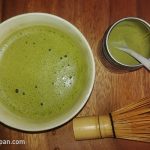 Matcha Reviews – The Top Best Matcha Green Tea
Matcha Reviews – The Top Best Matcha Green Tea
The green tea leaves contain an antioxidant epigallocatechin-3-gallate, caffeine, amino-acid L-Theanine, Folate, Choline, Riboflavin...
 Tea Health Benefits -Tea, Tea, And Then Some More Tea
Tea Health Benefits -Tea, Tea, And Then Some More Tea
The health benefits of tea have been attributed to the presence of antioxidants, catechins, polyphenols, and phytochemicals...
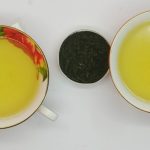 Tips to Choose Green Tea – For Quality and Health Benefits
Tips to Choose Green Tea – For Quality and Health Benefits
The difference in character and properties between teas depends on when they are plucked and how they are processed...
Green tea, native to China and Japan, has been drinking for centuries and still remains everyday drink...
